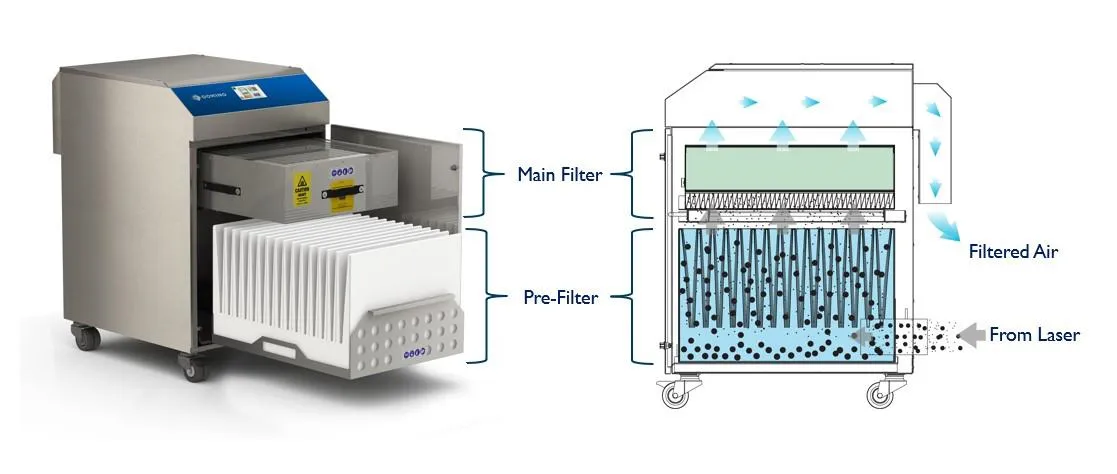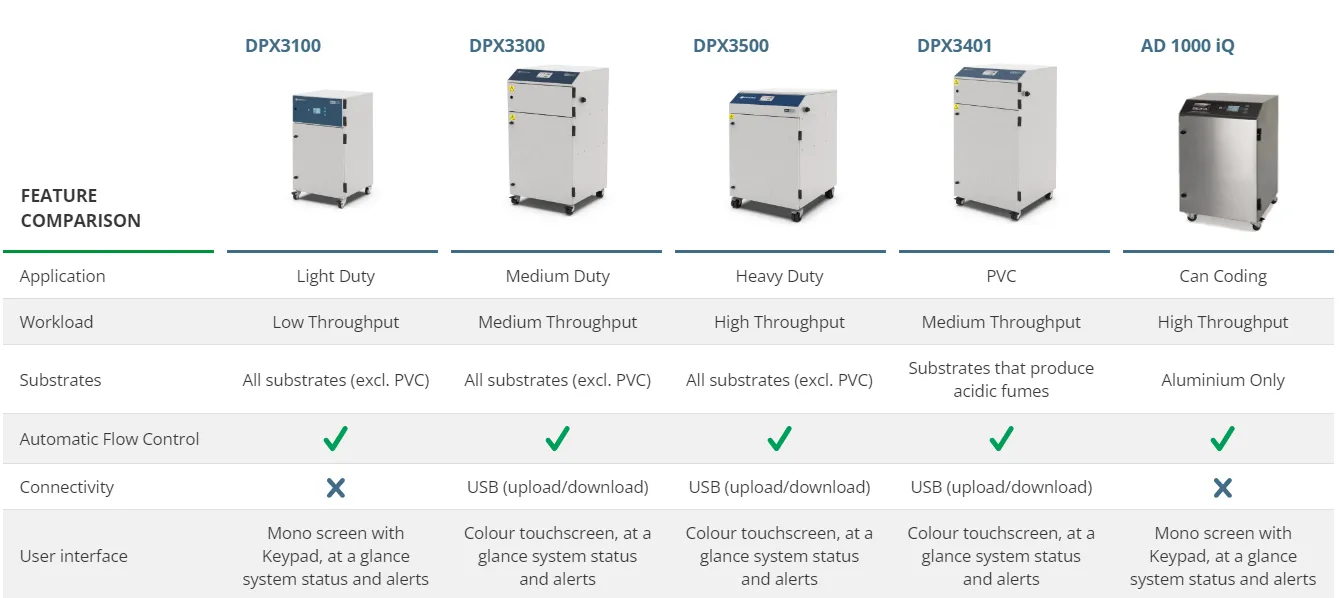Have you ever wondered why installing an efficient extraction system on a production line is so important when using a scribing laser system to apply traceability codes? This blog answers your question. We have talked to experts in this field: Luit Bakker, Key Account Manager at Domino Benelux and Phil Benbow, Global Product Manager Extraction at Domino.
Phil Benbow, says: "Independent of using a CO2, UV or fibre laser, when a laser is used to code onto a product, it removes material from the surface of the product. This creates fumes and debris at the point of ablation that end up in the air and on the production area. Depending on the laser used and the surface of the material that has been lasered, this is to a greater or lesser extent. To remove these substances and keep the production environment clean, an effective extraction system is really essential.”

Debris, dust, fumes and particles
Luit Bakker highlights the importance: "Without proper extraction, fumes and particles caused by lasering pollute the production environment. It should be a priority to ensure these contaminants do not cause hazards or impact production. From my experience installing an efficient extraction system can help comply with safety regulations and maintain productivity by avoiding build-up of contaminents from the lasering process on the machines and systems."
And Phil adds: "Consider, for example, the debris settling on the lens of the laser or on a camera system. Ultimately, this contamination can lead to poor coding quality and possibly damage the equipment. Resulting in downtime and reduced production for enhanced maintenance requirements, cleaning and repairs, plus adding repair costs; additionally it can shorten the life of the production equipment.
In essence, extraction is essential to ensure uninterrupted production and good coding quality. From our experience, an additional benefit is that the laser lens lasts much longer."
How does an extractor work?
Very simply put, either a shroud, nozzle or hose is positioned close to the point of laser ablation to suck the ablated debris into the extractor. Here the debris passes through filters that effectively remove the fumes and particles from the lasering process. Afterwards the air either returns into the factory (vent-to-factory), or is removed completely (vent-to-air).

Is your extraction system efficient?
Many companies have already equipped their production lines with extraction units for their laser system. These companies are on the right track. But how do you know your extraction system works properly and efficiently?
Luit tells us: "Poorly functioning extraction can be recognised by several things. Increased maintenance required, visible debris on the machines or the print quality is bad. Looking more closely, the lens of the laser is dusty. In some cases the laser system has simply failed altogether. In addition, over time, more and more dust and dirt accumulates in the hose of the extraction system".

Have a look at these images: the ones on the left show extraction hoses that have collected a lot of debris that would otherwise have settled on products, lasers and production equipment – now these hoses need cleaning to ensure they can keep up the work. On the right you see dirty laser lenses from lines that did not have a sufficient extraction installed: as you can easily imagine, the performance of these lenses is heavily impacted and will not deliver a high quality code anymore.
So it is not only important to have extraction installed, but also to have the right one for your production requirements; just a few examples:
- High throughput lines need an extraction designed for heavy duty
- PVC production produces acidic fumes that require specific filters
- Food and beverage can coding needs specific equipment suited to aluminium debris and the demanding, often wet environment
Which extraction system to choose
So an effective extraction system is required for every laser installation to optimise the output: production runs smoothly without interruption, the laser system requires no attention and the coding quality is high. Just imagine the opposite: line interruption, costs of repair, replacement, downtime and products being rejected because the required manufacturing data is not readable.
But how do I find the perfect extraction system for my production environment? Luit: "Seek expert support to help investigate your application in detail before recommending a solution. I regularly give companies help and advice on what is the best choice of extraction system for their requirements".
At Domino we have a range of extraction systems available to suit your specific needs; our experts are at hand to define the ideal solution for your requirements. Please get in touch.
